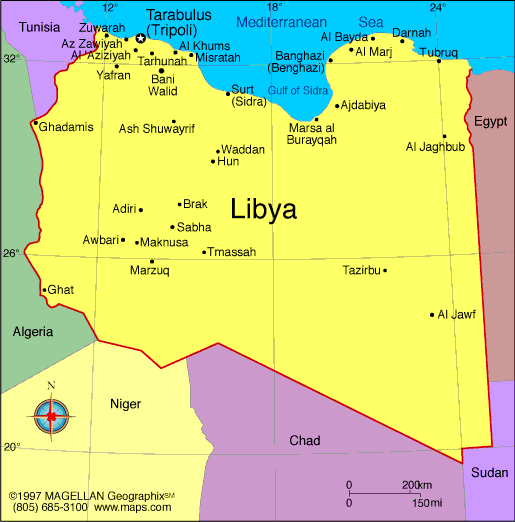Libya
Location: Libya lies in North Africa, bordering the Mediterranean Sea, between Egypt and Tunisia.
Area: Libya covers 1,759,540 sq km, which is 4.6 times larger than Japan.
History: The history Libya is covered under five distinct periods: Ancient period, the Islamic period, Ottoman rule, Italian rule, and the modern era.
Capital City: Tripoli is Libya’s capital and largest city.
Population: Around 5.6 million people call Libya home.
Religion: Sunni Muslim 97%, other 3%.
Language: Arabic is the official language of Libya. English is widely understood in the major cities.
Climate: 90% of Libya is made up of the Sahara Desert, and gets extremely hot during the summer months (June – September). The rains fall mainly along the coast from October through April, It stays relatively cool along the coast during the winter months (December – February).
Currency: The Libyan Dinar – LYD
Libya’s Most Attractions
Libya is home to some of the most pristine and impressive Roman ruins on earth. The Sahara desert is also spectacular, with incredible dunes, oases towns, and magical lakes.
- Leptis Magna – Excavated in the 1920′s this World Heritage site is a magnificently preserved Roman city dating back to the 10 Century BC. You can clearly make out public monuments, a harbor, market-place, storehouses, shops and residential districts. The ruins cover a very large area and if you enjoy archaeology you’ll probably want to spend at least half a day here
- Cyrene – Originally founded by the Greeks in 630 BC, Cyrene later became an important Roman city and now a wonderful archaeological site for visitors to enjoy. Ancient Greek temples and statues are very well preserved and offer a unique glimpse into ancient Greece in Africa.
- Sabratha is a port established, perhaps about 500 BC, as a Phoenician trading-post that served as a coastal outlet for the products of the African hinterland. Sabratha became part of the short-lived Numidian Kingdom of Massinissa before being Romanized and rebuilt in the 2nd and 3rd centuries AD. The Emperor Septimius Severus was born nearby in Leptis Magna, and Sabratha reached its monumental peak during the rule of the Severans. The city was badly damaged by earthquakes during the 4th century, particularly the quake of AD 365. It was rebuilt on a more modest scale by Byzantine governors. Within a hundred years of the Arab conquest of the Maghreb, trade had shifted to other ports and Sabratha dwindled to a village.
- Gadhames – called `the Pearl of the desert`. It is an oasis in the Libyan Sahara and is known as an important stage on the trans-Sahara trade route. Gadhames is located 550km southwest of Tripoli near the borders of Algeria, Tunisia and Libya. The city is known for the beautiful traditional settlement of one of the oldest pre-Saharan cities.

